Songe d’une effraction
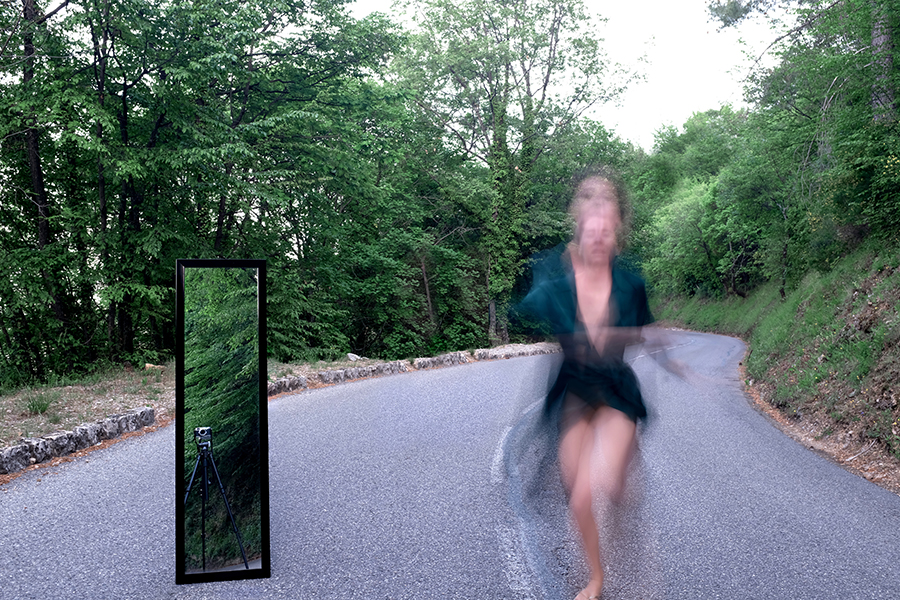
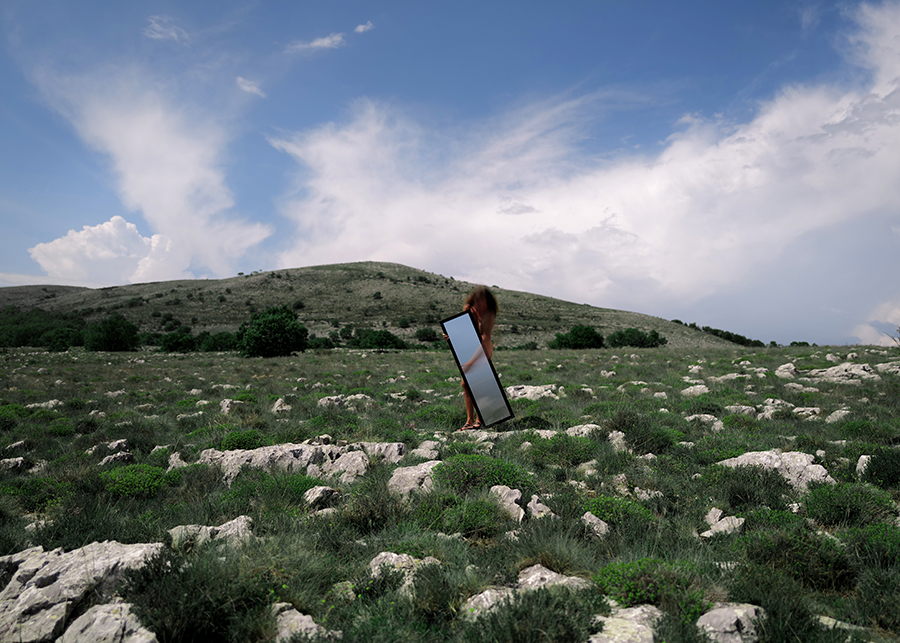
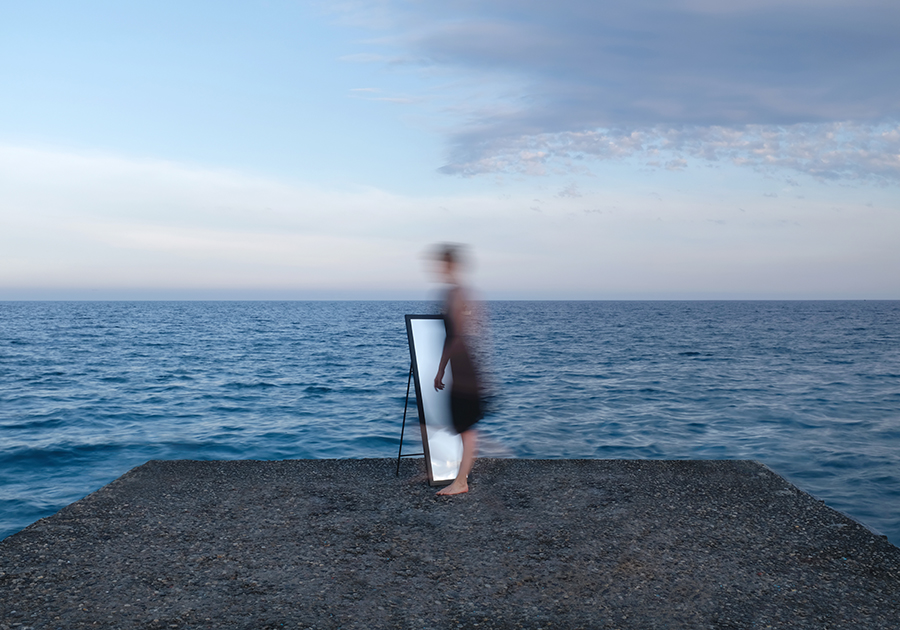
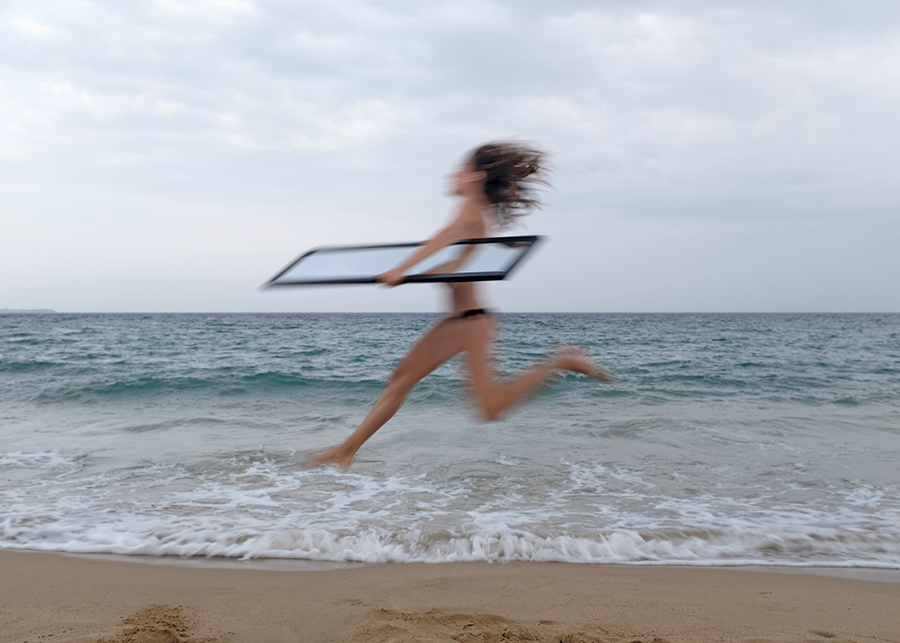
Le Jeu du Sel et du hasard
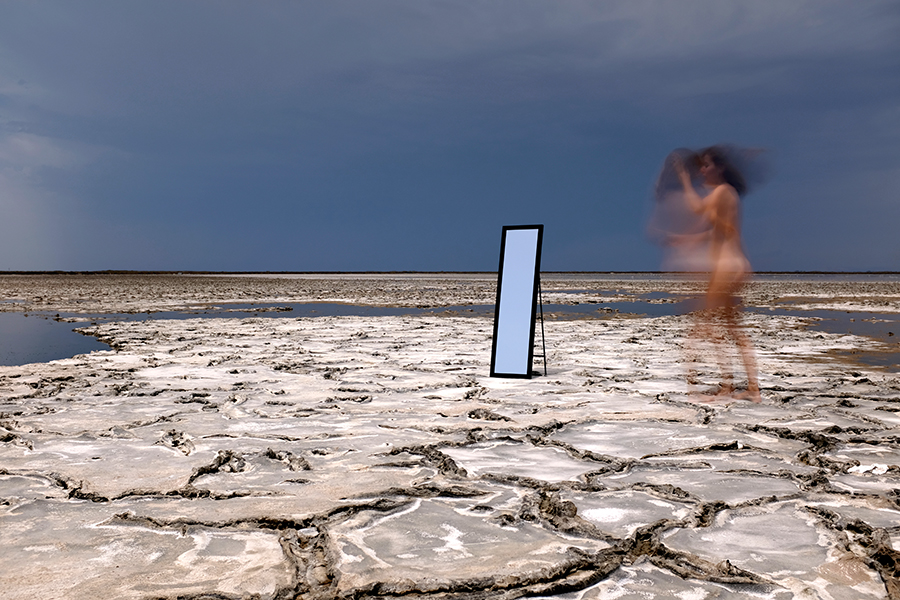

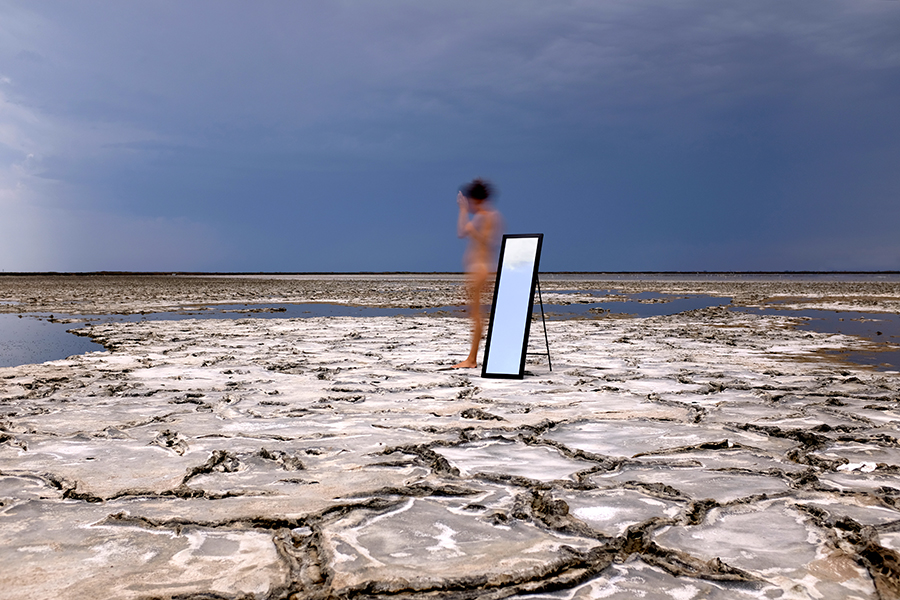

Odyssée pastorale


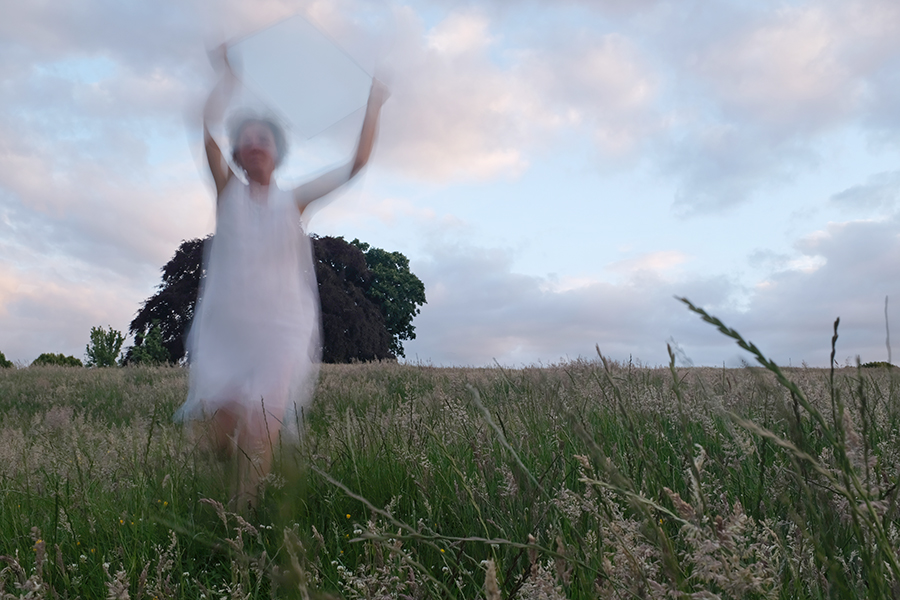
Le vierge, le vivace et le bel aujourd’hui
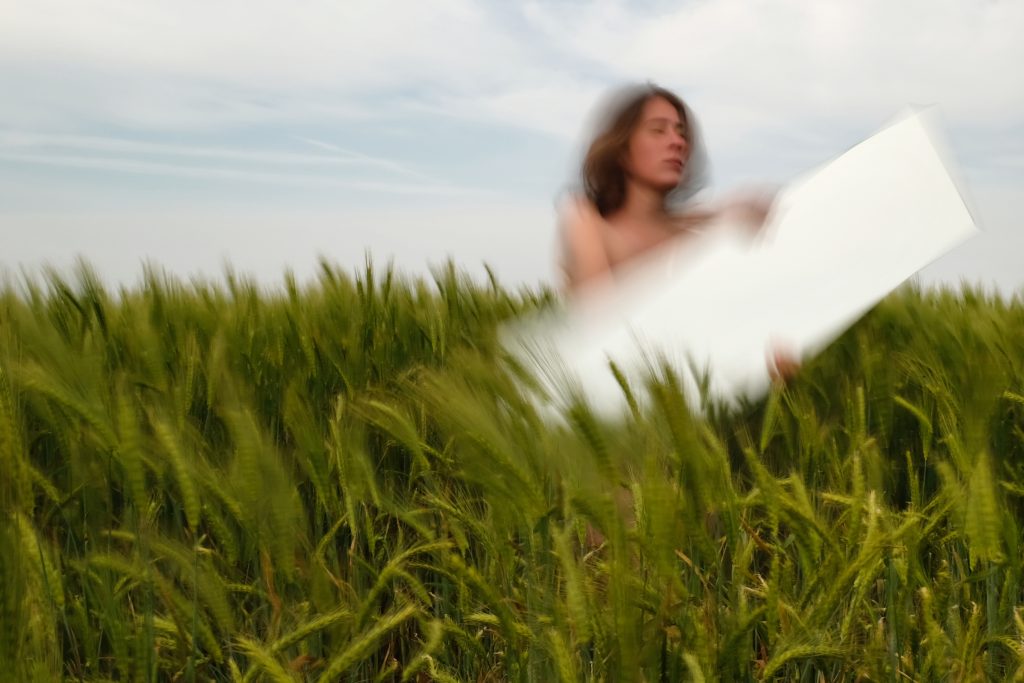
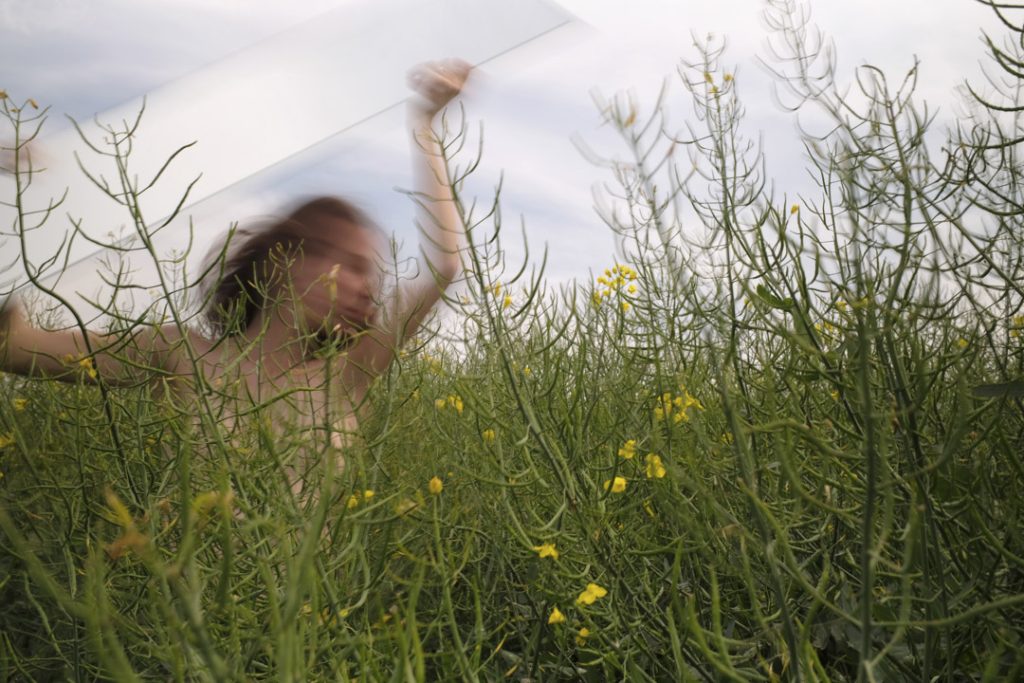

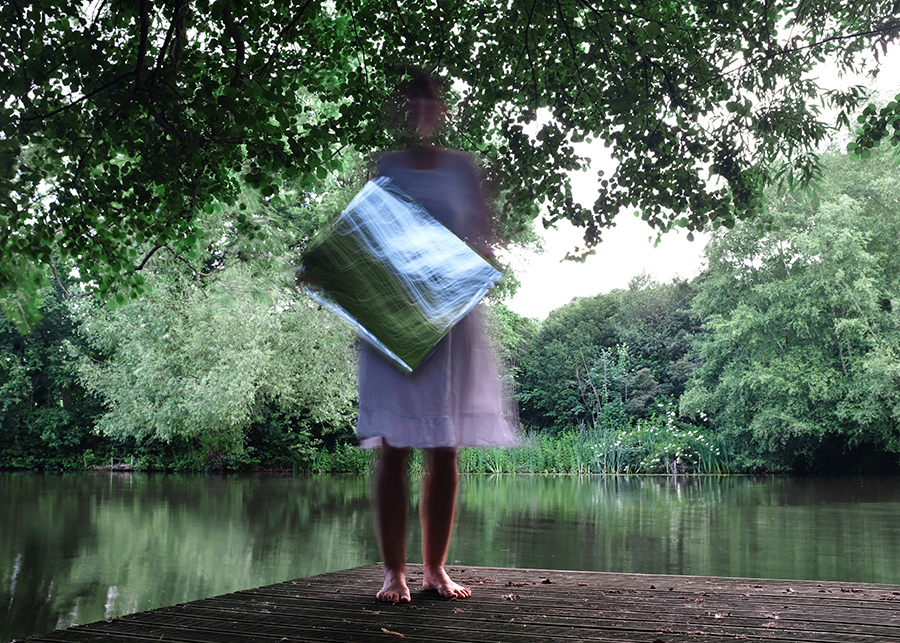
Tissées à partir d’une performance, les photographies de Clémence Goubault se construisent autour de l’autoportrait. Son autofiguration entre en collision avec le monde organique, telle une effraction au sein du réel. Au fil de ces mises en scène, l’espace est devenu terrain de jeu ; elle dépose son miroir dans des espaces infinis.
A la fois orchestré et aléatoire, le mouvement – capturé par une pose longue – engendre dilatations et métamorphoses de la chair. Chaque décor est coloré par une recherche picturale et vient dessiner une curieuse expression de la nature. L’entrebâillement du miroir laisse apparaître un trouble entre fiction et réalisme. Dès lors, se profile une plongée immersive dans le vertige de l’incompréhension. Cet archipel d’incongruités tient à l’impossibilité de figer une représentation. L’association du miroir au flou est un artefact source d’une puissante tragi-comédie. Le miroir contient une versatilité et une frivolité inépuisable. L’inconstance de ses reflets et jeux de lumières font qu’il reflète ce que bon lui semble. Toute intervention humaine s’avère vaine.
Le miroir promène le regard vers une autre fenêtre. Il projette l’intensité du réel – sa matérialité, sa plasticité, mais surtout son impermanence. Plus qu’une chambre à soi, le miroir s’invite ici telle une chambre intérieure portée sur l’infini du dehors. Véritable conversation entre l’intimité et l’extimité, entre le particulier et l’universel, les photographies convoquent le mystère des apparences intérieures. S’ensuit un trouble. L’énigme d’une figuration évanescente. L’impossibilité d’un autoportrait. Chaque image flotte dans un entre-deux perturbant : entre apparition et disparition. Le flou se veut l’expression d’une ambiguïté – d’un aller-retour entre la vie et la mort, pourtant teintée d’une puissante allégresse.
Critique
Clémence Goubault’s photographic series Shimmering Wanders moves the viewer through the imagery of subjects in motion against the background of inert natural world, playing with our preconceived perception of movement/stillness; so much so that the green hills, the waving seas, the baked land, and winding roads all appear to be a theatrical scenery where the perpetual flux of becoming and ceasing takes place. As a result, human bodies lose their defined forms; faces adopt unrecognizable expressions, occasionally turning into grimaces. Limbs melt into the scenery while other sections of the bodies seem to emerge from the wallpaper of nature painted in soothing pastel colors. The transient nature of time and human existence are depicted as pale, eager to fade entirely. Inevitable collision of our gaze with the images induces a sense of unease, as the veil of everyday reality that grants stability and certainty is abruptly pulled off of our eyes. We are left standing naked in our awareness, standing but not still for even this realization is already in the process of vanishing, being substituted by other awakenings. The incorporation of the mirror in the composition of the photographs is meaningful and speaks of its dual role: to grant multidimensionality to the space where the images are being captured, as well as to convince the audience that in order for the watcher to be able to see the photograph, they themselves need to be inside the picture. The mirror is a wise trickster here as it has no qualities of its own. Therefore it is able to enclose the observer within the photograph so that instead of looking at the images from outside, one conceives itself as the content and the workings of its own psyche.
Jurgita Jocyte